Boris Karanov
Hybrid Real- and Complex-valued Neural Network Architecture
Apr 04, 2025Abstract:We propose a \emph{hybrid} real- and complex-valued \emph{neural network} (HNN) architecture, designed to combine the computational efficiency of real-valued processing with the ability to effectively handle complex-valued data. We illustrate the limitations of using real-valued neural networks (RVNNs) for inherently complex-valued problems by showing how it learnt to perform complex-valued convolution, but with notable inefficiencies stemming from its real-valued constraints. To create the HNN, we propose to use building blocks containing both real- and complex-valued paths, where information between domains is exchanged through domain conversion functions. We also introduce novel complex-valued activation functions, with higher generalisation and parameterisation efficiency. HNN-specific architecture search techniques are described to navigate the larger solution space. Experiments with the AudioMNIST dataset demonstrate that the HNN reduces cross-entropy loss and consumes less parameters compared to an RVNN for all considered cases. Such results highlight the potential for the use of partially complex-valued processing in neural networks and applications for HNNs in many signal processing domains.
Modified Baum-Welch Algorithm for Joint Blind Channel Estimation and Turbo Equalization
Dec 10, 2024

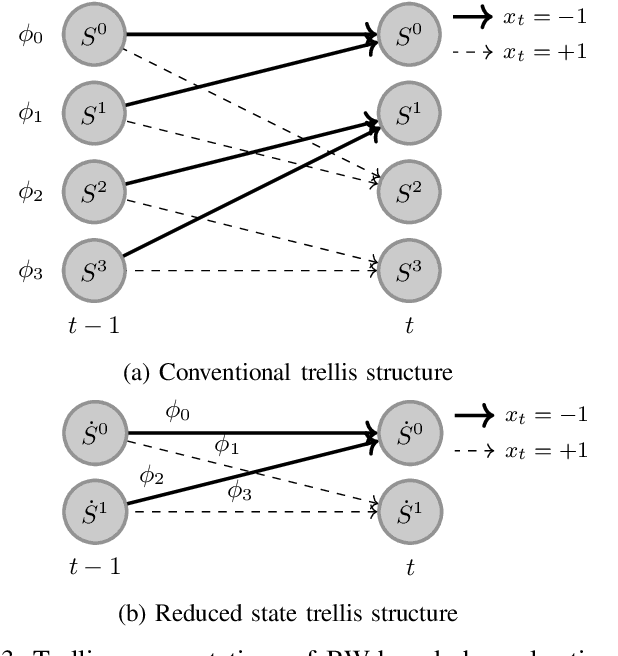
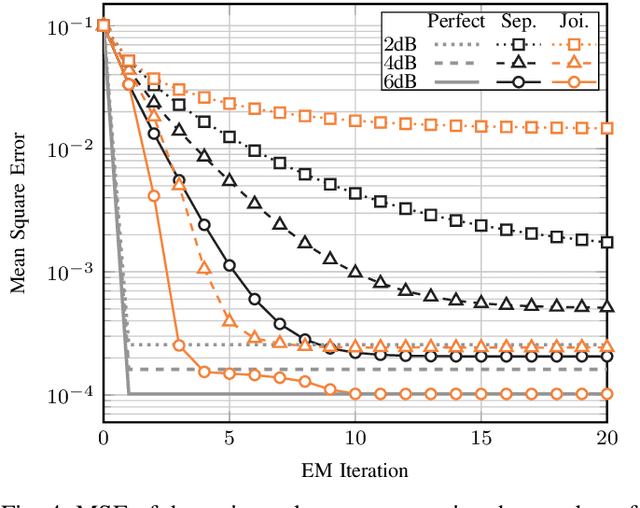
Abstract:Blind estimation of intersymbol interference channels based on the Baum-Welch (BW) algorithm, a specific implementation of the expectation-maximization (EM) algorithm for training hidden Markov models, is robust and does not require labeled data. However, it is known for its extensive computation cost, slow convergence, and frequently converges to a local maximum. In this paper, we modified the trellis structure of the BW algorithm by associating the channel parameters with two consecutive states. This modification enables us to reduce the number of required states by half while maintaining the same performance. Moreover, to improve the convergence rate and the estimation performance, we construct a joint turbo-BW-equalization system by exploiting the extrinsic information produced by the turbo decoder to refine the BW-based estimator at each EM iteration. Our experiments demonstrate that the joint system achieves convergence in just 4 EM iterations, which is 8 iterations less than a separate system design for a signal-to-noise ratio (SNR) of 6 dB. Additionally, the joint system provides improved estimation accuracy with a mean square error (MSE) of $10^{-4}$. We also identify scenarios where a joint design is not preferable, especially when the channel is noisy (e.g., SNR=2 dB) and the turbo decoder is unable to provide reliable extrinsic information for a BW-based estimator.
Turbo Receiver Design with Joint Detection and Demapping for Coded Differential BPSK in Bursty Impulsive Noise Channels
Dec 10, 2024
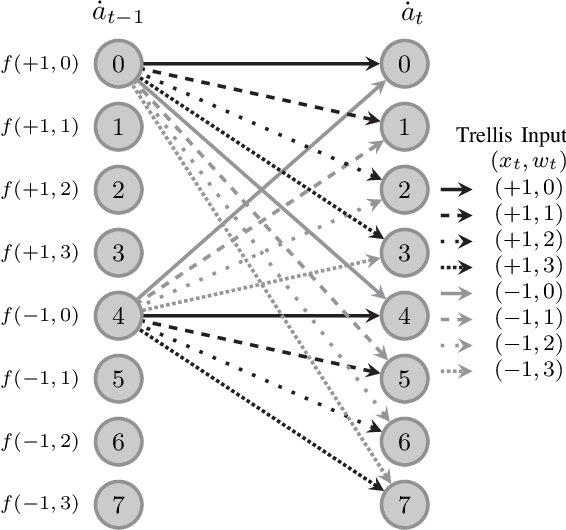
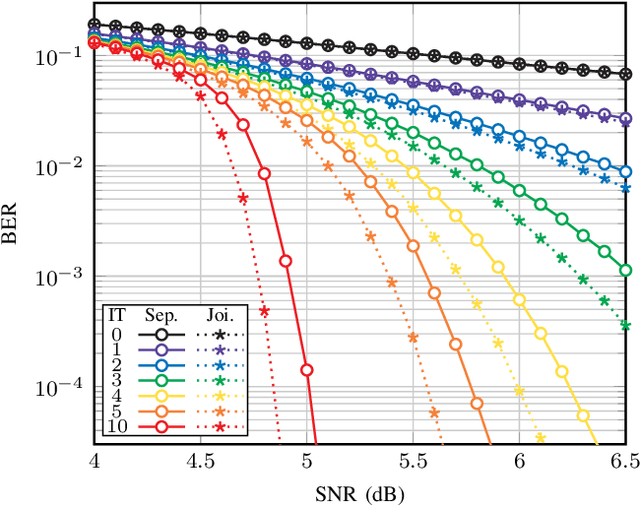
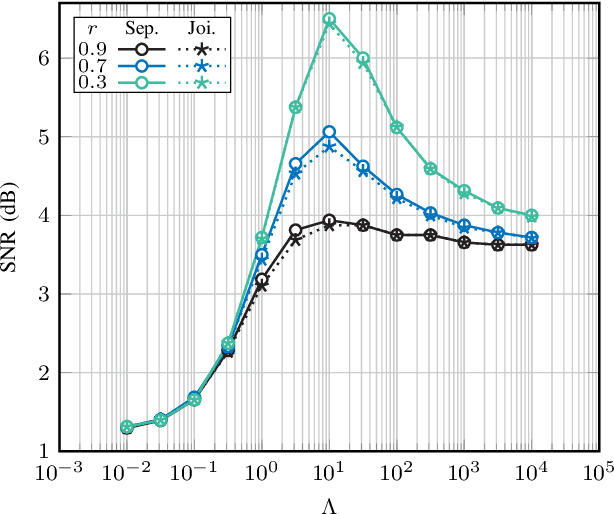
Abstract:It has been recognized that the impulsive noise (IN) generated by power devices poses significant challenges to wireless receivers in practice. In this paper, we assess the achievable information rate (AIR) and the performance of practical turbo receiver designs for a well-established Markov-Middleton IN model. We utilize a commonly used commercial transmission setup consisting of a convolutional encoder, bit-level interleaver, and a differential binary phase-shift keying (DBPSK) symbol mapper. Firstly, we conduct a comprehensive assessment of the AIRs of the underlying channel model using DBPSK transmitted symbols across various channel conditions. Additionally, we introduce two robust turbo-like receiver designs. The first design features a separate IN detector and a turbo-demapper-decoder. The second design employs a joint approach, where the extrinsic information of both the detector and demapper is simultaneously updated, forming a turbo-detector-demapper-decoder structure. We show that the joint design consistently outperforms the separate design across all channel conditions, particularly in low AIR situations. However, the maximum performance gain for the channel conditions considered in this paper is merely 0.2 dB, and the joint system incurs significantly greater computational complexity, especially for a high number of turbo iterations. The performance of the two proposed turbo receiver designs is demonstrated to be close to the estimated AIR, with a performance gap dependent on the channel parameters.
Spectral Masking with Explicit Time-Context Windowing for Neural Network-Based Monaural Speech Enhancement
Aug 28, 2024
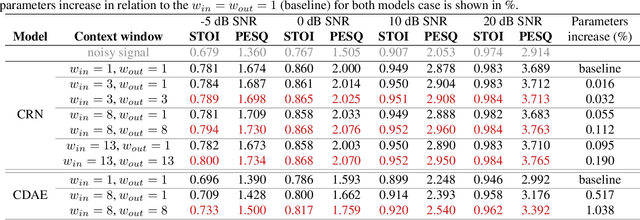

Abstract:We propose and analyze the use of an explicit time-context window for neural network-based spectral masking speech enhancement to leverage signal context dependencies between neighboring frames. In particular, we concentrate on soft masking and loss computed on the time-frequency representation of the reconstructed speech. We show that the application of a time-context windowing function at both input and output of the neural network model improves the soft mask estimation process by combining multiple estimates taken from different contexts. The proposed approach is only applied as post-optimization in inference mode, not requiring additional layers or special training for the neural network model. Our results show that the method consistently increases both intelligibility and signal quality of the denoised speech, as demonstrated for two classes of convolutional-based speech enhancement models. Importantly, the proposed method requires only a negligible ($\leq1\%$) increase in the number of model parameters, making it suitable for hardware-constrained applications.
Analysis of Impulsive Interference in Digital Audio Broadcasting Systems in Electric Vehicles
May 17, 2024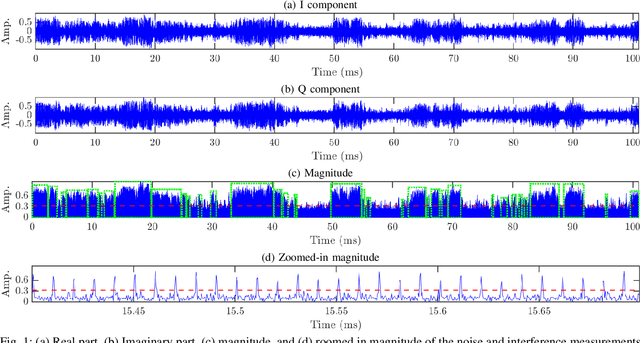
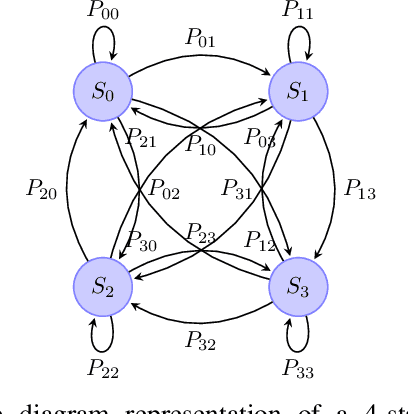
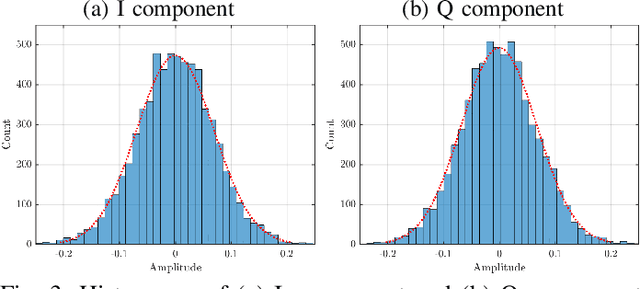
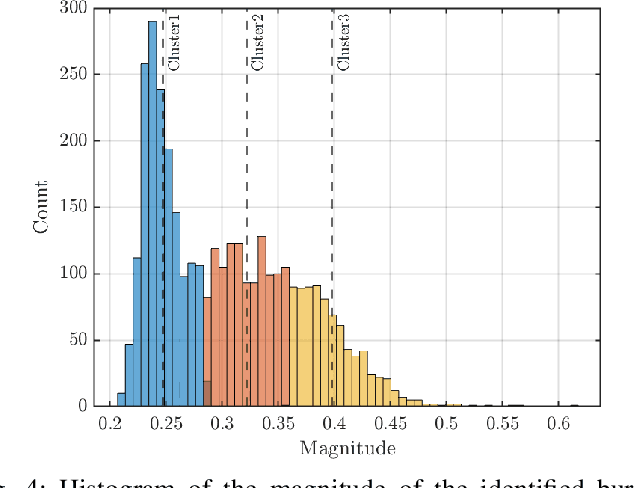
Abstract:Recently, new types of interference in electric vehicles (EVs), such as converters switching and/or battery chargers, have been found to degrade the performance of wireless digital transmission systems. Measurements show that such an interference is characterized by impulsive behavior and is widely varying in time. This paper uses recorded data from our EV testbed to analyze the impulsive interference in the digital audio broadcasting band. Moreover, we use our analysis to obtain a corresponding interference model. In particular, we studied the temporal characteristics of the interference and confirmed that its amplitude indeed exhibits an impulsive behavior. Our results show that impulsive events span successive received signal samples and thus indicate a bursty nature. To this end, we performed a data-driven modification of a well-established model for bursty impulsive interference, the Markov-Middleton model, to produce synthetic noise realization. We investigate the optimal symbol detector design based on the proposed model and show significant performance gains compared to the conventional detector based on the additive white Gaussian noise assumption.
Data-Driven Symbol Detection for Intersymbol Interference Channels with Bursty Impulsive Noise
May 17, 2024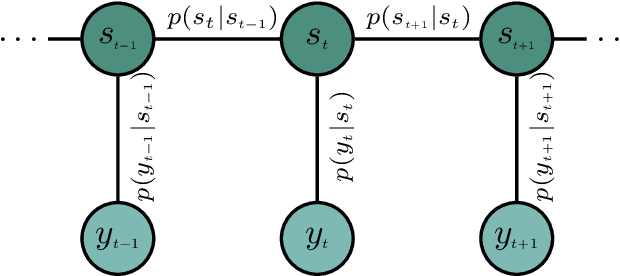
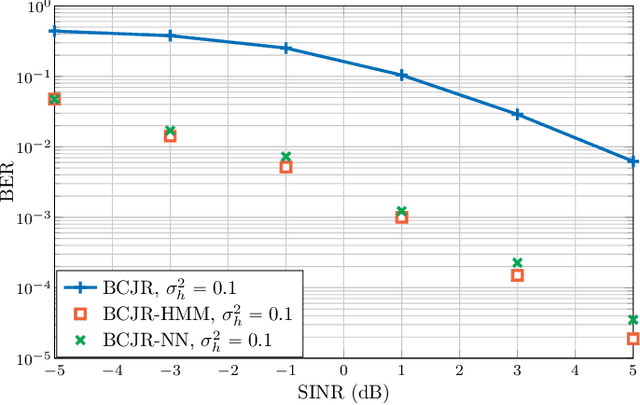
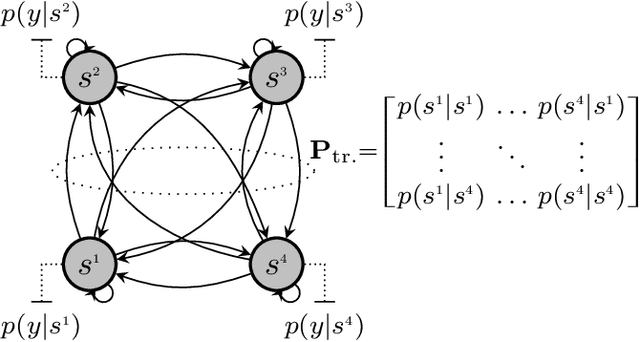
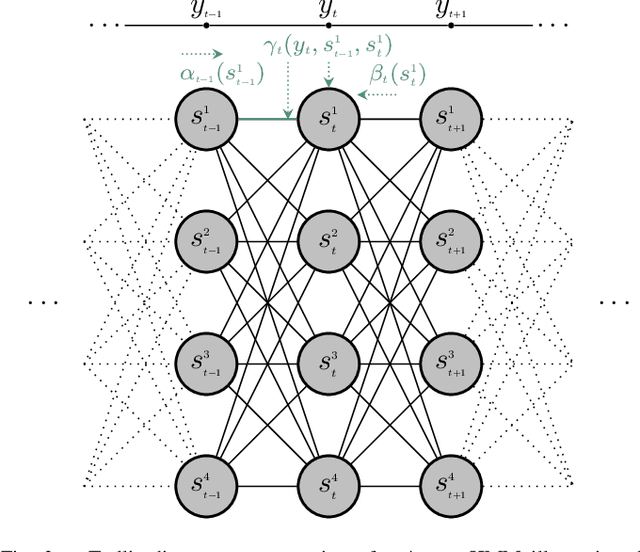
Abstract:We developed machine learning approaches for data-driven trellis-based soft symbol detection in coded transmission over intersymbol interference (ISI) channels in presence of bursty impulsive noise (IN), for example encountered in wireless digital broadcasting systems and vehicular communications. This enabled us to obtain optimized detectors based on the Bahl-Cocke-Jelinek-Raviv (BCJR) algorithm while circumventing the use of full channel state information (CSI) for computing likelihoods and trellis state transition probabilities. First, we extended the application of the neural network (NN)-aided BCJR, recently proposed for ISI channels with additive white Gaussian noise (AWGN). Although suitable for estimating likelihoods via labeling of transmission sequences, the BCJR-NN method does not provide a framework for learning the trellis state transitions. In addition to detection over the joint ISI and IN states we also focused on another scenario where trellis transitions are not trivial: detection for the ISI channel with AWGN with inaccurate knowledge of the channel memory at the receiver. Without access to the accurate state transition matrix, the BCJR- NN performance significantly degrades in both settings. To this end, we devised an alternative approach for data-driven BCJR detection based on the unsupervised learning of a hidden Markov model (HMM). The BCJR-HMM allowed us to optimize both the likelihood function and the state transition matrix without labeling. Moreover, we demonstrated the viability of a hybrid NN and HMM BCJR detection where NN is used for learning the likelihoods, while the state transitions are optimized via HMM. While reducing the required prior channel knowledge, the examined data-driven detectors with learned trellis state transitions achieve bit error rates close to the optimal full CSI-based BCJR, significantly outperforming detection with inaccurate CSI.
On the Robustness of Deep Learning-aided Symbol Detectors to Varying Conditions and Imperfect Channel Knowledge
Jan 23, 2024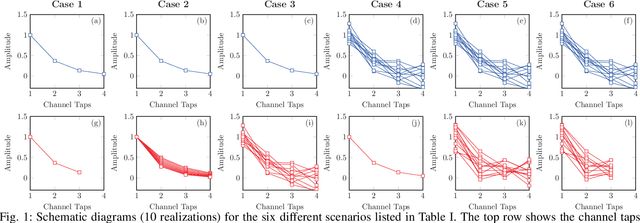


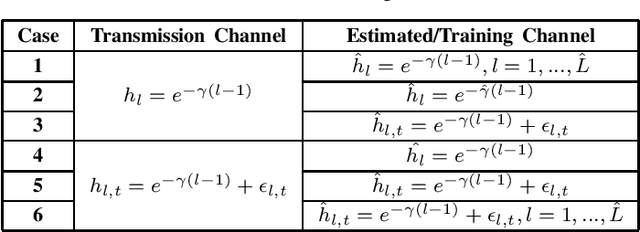
Abstract:Recently, a data-driven Bahl-Cocke-Jelinek-Raviv (BCJR) algorithm tailored to channels with intersymbol interference has been introduced. This so-called BCJRNet algorithm utilizes neural networks to calculate channel likelihoods. BCJRNet has demonstrated resilience against inaccurate channel tap estimations when applied to a time-invariant channel with ideal exponential decay profiles. However, its generalization capabilities for practically-relevant time-varying channels, where the receiver can only access incorrect channel parameters, remain largely unexplored. The primary contribution of this paper is to expand upon the results from existing literature to encompass a variety of imperfect channel knowledge cases that appear in real-world transmissions. Our findings demonstrate that BCJRNet significantly outperforms the conventional BCJR algorithm for stationary transmission scenarios when learning from noisy channel data and with imperfect channel decay profiles. However, this advantage is shown to diminish when the operating channel is also rapidly time-varying. Our results also show the importance of memory assumptions for conventional BCJR and BCJRNet. An underestimation of the memory largely degrades the performance of both BCJR and BCJRNet, especially in a slow-decaying channel. To mimic a situation closer to a practical scenario, we also combined channel tap uncertainty with imperfect channel memory knowledge. Somewhat surprisingly, our results revealed improved performance when employing the conventional BCJR with an underestimated memory assumption. BCJRNet, on the other hand, showed a consistent performance improvement as the level of accurate memory knowledge increased.
High-Cardinality Hybrid Shaping for 4D Modulation Formats in Optical Communications Optimized via End-to-End Learning
Dec 20, 2021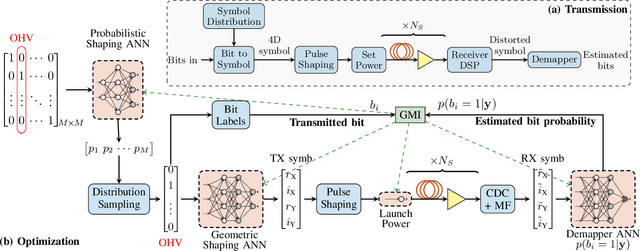
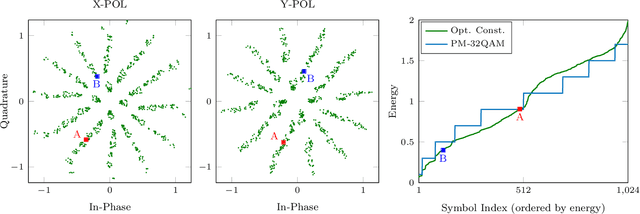
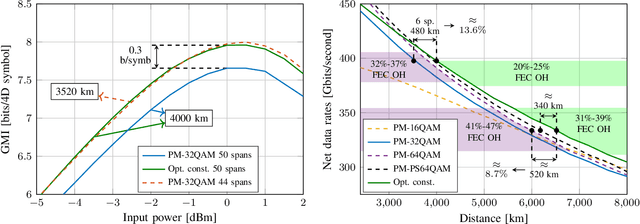
Abstract:In this paper we carry out a joint optimization of probabilistic (PS) and geometric shaping (GS) for four-dimensional (4D) modulation formats in long-haul coherent wavelength division multiplexed (WDM) optical fiber communications using an auto-encoder framework. We propose a 4D 10 bits/symbol constellation which we obtained via end-to-end deep learning over the split-step Fourier model of the fiber channel. The constellation achieved 13.6% reach increase at a data rate of approximately 400 Gbits/second in comparison to the ubiquitously employed polarization multiplexed 32-QAM format at a forward error correction overhead of 20%.
Experimental Investigation of Deep Learning for Digital Signal Processing in Short Reach Optical Fiber Communications
May 18, 2020
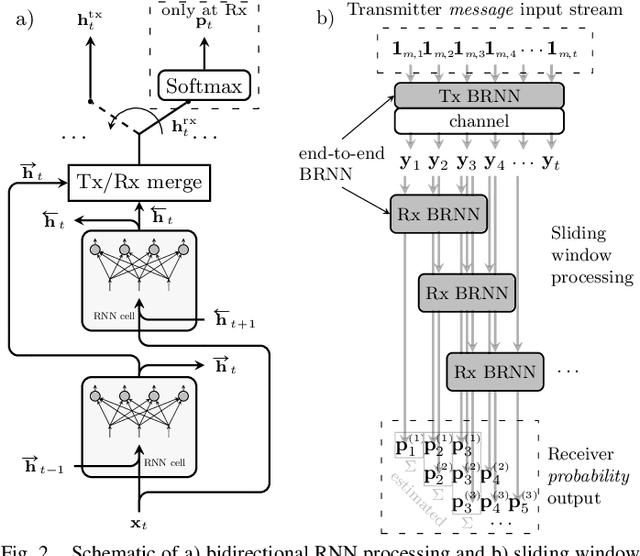
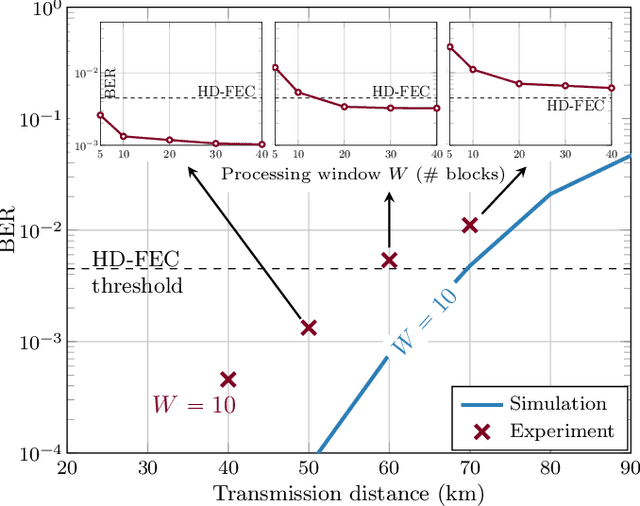
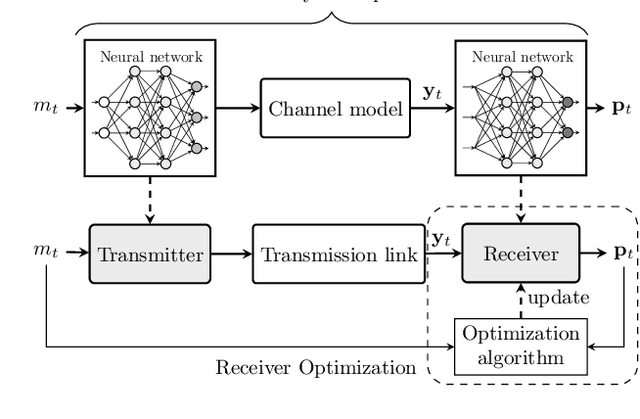
Abstract:We investigate methods for experimental performance enhancement of auto-encoders based on a recurrent neural network (RNN) for communication over dispersive nonlinear channels. In particular, our focus is on the recently proposed sliding window bidirectional RNN (SBRNN) optical fiber autoencoder. We show that adjusting the processing window in the sequence estimation algorithm at the receiver improves the reach of simple systems trained on a channel model and applied "as is" to the transmission link. Moreover, the collected experimental data was used to optimize the receiver neural network parameters, allowing to transmit 42 Gb/s with bit-error rate (BER) below the 6.7% hard-decision forward error correction threshold at distances up to 70km as well as 84 Gb/s at 20 km. The investigation of digital signal processing (DSP) optimized on experimental data is extended to pulse amplitude modulation with receivers performing sliding window sequence estimation using a feed-forward or a recurrent neural network as well as classical nonlinear Volterra equalization. Our results show that, for fixed algorithm memory, the DSP based on deep learning achieves an improved BER performance, allowing to increase the reach of the system.
Optical Fiber Communication Systems Based on End-to-End Deep Learning
May 18, 2020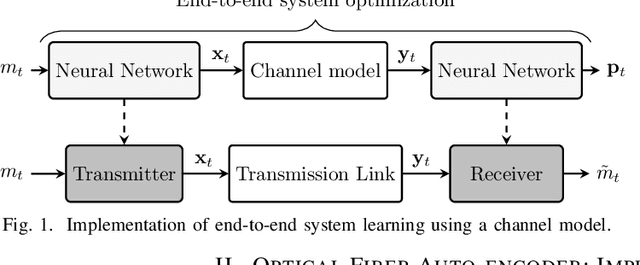
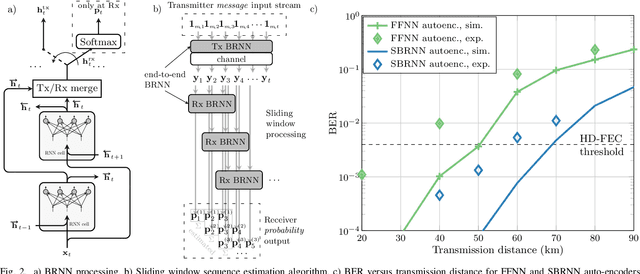
Abstract:We investigate end-to-end optimized optical transmission systems based on feedforward or bidirectional recurrent neural networks (BRNN) and deep learning. In particular, we report the first experimental demonstration of a BRNN auto-encoder, highlighting the performance improvement achieved with recurrent processing for communication over dispersive nonlinear channels.
 Add to Chrome
Add to Chrome Add to Firefox
Add to Firefox Add to Edge
Add to Edge